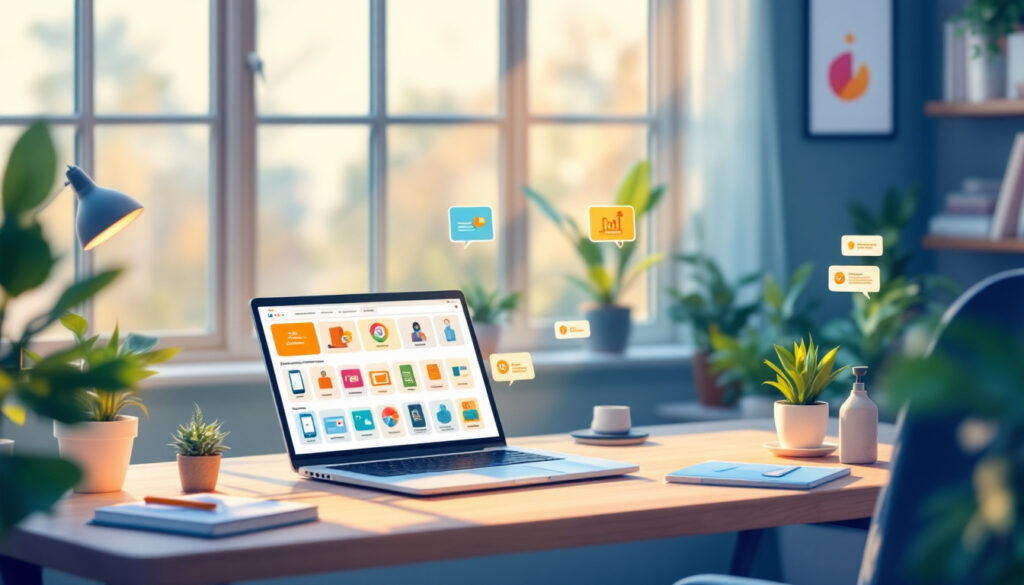A Day in the Life of a Senior Digital Product Designer at Black and Decker
A Senior Digital Product Designer at Black and Decker orchestrates the balance between practical functionality and seamless user experiences. This role demands a deep understanding of user-centered design principles, merging creativity with technical strategy to shape innovative solutions. Collaboration is at its core, involving close work with engineers, product managers, and stakeholders to align design choices with both business goals and user needs. Each day brings a combination of problem-solving, design iteration, and strategic input, making this position a crucial driver for elevating digital products within a globally recognized brand “Senior Digital Product Designer”. Morning: Starting the Day with Strategy Mornings in the life of a Senior Digital Product Designer at Black and Decker are marked by structured planning and collaboration. Every moment is thoughtfully allocated, ensuring the day’s work aligns with broader team objectives and project timelines. The focus is on cultivating a strategic approach that supports creativity without compromising productivity. Team Stand-Ups and Agile Practices Daily stand-up meetings are the cornerstone of collaboration for designers working in Agile environments. These short, focused sessions act as a check-in, where the team discusses progress, roadblocks, and objectives for the day. For a Senior Digital Product Designer, these meetings are an opportunity to align with developers, product managers, and other stakeholders while ensuring design needs are integrated into the workflow. The agility of these meetings ensures no issue is left unaddressed for long. Designers often highlight the benefit of spotting blockers early, which streamlines problem-solving and keeps projects moving efficiently. Agile methodologies foster a dynamic and adaptive planning environment, allowing teams to adjust as priorities shift. For more insights into the benefits and objectives of daily stand-ups, Agile Academy’s guide to daily standups explains the practice in detail. Photo by Thirdman Setting Daily Priorities After the morning stand-up, time is dedicated to establishing daily priorities. Designers typically reference their project management tools and design backlogs to identify tasks that need immediate attention. Urgent deliverables, such as prototype refinements or user feedback implementation, are given precedence, while larger, less time-sensitive projects are paced appropriately. The prioritization process centers on balancing immediate project deadlines with the ongoing need for strategic design development. By breaking tasks into manageable steps and allocating realistic timeframes, designers maintain consistent progress. Using time management techniques ensures that every hour maximizes output while avoiding burnout. For practical advice on setting priorities, Grace and Vine Studios offers actionable tips that resonate well with designers juggling complex projects. This clear, methodical approach to mornings helps Black and Decker’s design team start strong, aligning creative efforts with technical expectations and overarching product goals. Midday: Diving into Design As the morning transitions to mid-day, the focus sharpens on core design tasks that define the role of a Senior Digital Product Designer. This period often provides uninterrupted time to immerse in the creative and technical aspects of design work. From shaping wireframes to refining prototypes and collaborating with cross-functional teams, this is when ideas truly begin to take form. Wireframing and Prototyping Wireframing and prototyping are foundational to translating abstract concepts into tangible designs. Designers craft wireframes to establish the basic structure and layout of digital interfaces, ensuring usability remains at the forefront. These early drafts often omit visual complexities, allowing designers to zero in on functionality and workflows. Prototyping then brings these wireframes to life. By creating dynamic, interactive designs, it becomes possible to simulate user experiences before development begins. This method saves time and resources, identifying potential pitfalls early in the process. Tools like Figma or Adobe XD often play a critical role in this phase, offering flexibility and precision. For more on best practices, Smashing Magazine’s guide to wireframing and prototyping offers a detailed overview. Cross-Team Collaboration Collaboration with engineers, product managers, and stakeholders takes center stage during mid-day design sessions. These interactions ensure that the design vision aligns seamlessly with technical feasibility and business objectives. In a typical collaboration scenario, designers might discuss user flows or challenge development constraints to achieve a smoother user experience. Engineers provide insights on technical limitations or opportunities, while product managers advocate for business needs and priorities. This collaborative triangulation ensures the end product will align with all goals without compromising design integrity. Building strong communication bridges between teams is essential for success. For a deeper dive into fostering collaboration in design, UXPin’s guide to cross-functional collaboration is a helpful resource. Iterative Feedback and Revisions Iteration is key to refining designs and achieving optimal functionality. During this phase, feedback loops are established, enabling designers to improve their work incrementally. Stakeholders, team members, or even potential end-users are encouraged to provide constructive critiques, leading to revisions that enhance both the aesthetic and usability of the design. Small adjustments – such as tweaking spacing, refining interactive elements, or adjusting task flows – can make significant differences in the final product. Designers often lean on A/B testing or usability analysis to identify which revisions have the most impact. This constant iteration ensures that the product evolves to better serve its intended audience. For further insights, Medium’s article on iterative feedback sheds light on how feedback loops propel a design forward. Photo by Vanessa Loring This midday phase exemplifies how focused effort, collaboration, and an iterative mindset transform initial concepts into impactful, user-centered designs. Afternoon: Testing and Implementation Support The afternoon hours for a Senior Digital Product Designer at Black and Decker often focus on ensuring that designs are practical, user-friendly, and seamlessly understood by the development team. This stage is where ideas meet reality, with usability testing and development alignment taking center stage. Usability Testing and User Feedback Testing is a critical milestone in the design process. It ensures that the conceptual work aligns with real-world use cases. By observing actual interactions with the product, designers uncover friction points and unexpected behaviors that may otherwise go unnoticed. Key goals of usability testing include: User feedback is collected through varied methods like moderated tests or remote usability sessions. The feedback loop goes beyond addressing major issues; it also









